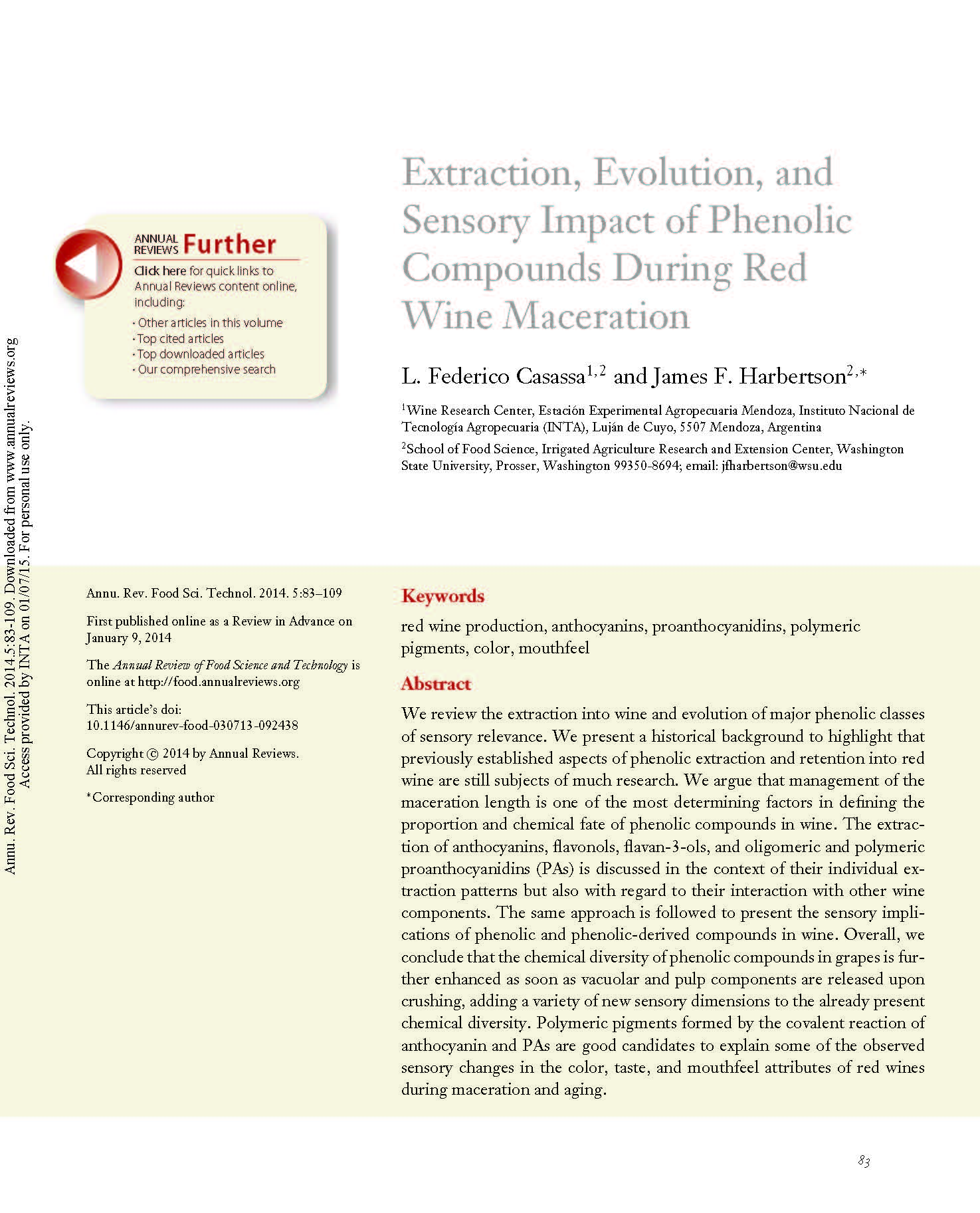Ver ítem
- xmlui.general.dspace_homeCentros Regionales y EEAsCentro Regional Mendoza - San JuanEEA MendozaArtículos científicosxmlui.ArtifactBrowser.ItemViewer.trail
- Inicio
- Centros Regionales y EEAs
- Centro Regional Mendoza - San Juan
- EEA Mendoza
- Artículos científicos
- Ver ítem
Extraction, Evolution, and Sensory Impact of Phenolic Compounds During Red Wine Maceration
Resumen
We review the extraction into wine and evolution of major phenolic classes of sensory relevance. We present a historical background to highlight that previously established aspects of phenolic extraction and retention into red wine are still subjects of much research. We argue that management of the maceration length is one of the most determining factors in defining the
proportion and chemical fate of phenolic compounds in wine. The extraction of
[ver mas...]
We review the extraction into wine and evolution of major phenolic classes of sensory relevance. We present a historical background to highlight that previously established aspects of phenolic extraction and retention into red wine are still subjects of much research. We argue that management of the maceration length is one of the most determining factors in defining the
proportion and chemical fate of phenolic compounds in wine. The extraction of anthocyanins, flavonols, flavan-3-ols, and oligomeric and polymeric proanthocyanidins (PAs) is discussed in the context of their individual extraction patterns but also with regard to their interaction with other wine components. The same approach is followed to present the sensory implications
of phenolic and phenolic-derived compounds in wine. Overall, we conclude that the chemical diversity of phenolic compounds in grapes is further enhanced as soon as vacuolar and pulp components are released upon crushing, adding a variety of new sensory dimensions to the already present chemical diversity. Polymeric pigments formed by the covalent reaction of anthocyanin and PAs are good candidates to explain some of the observed sensory changes in the color, taste, and mouthfeel attributes of red wines during maceration and aging.
[Cerrar]

Autor
Casassa, Luis Federico;
Harbertson, James F.;
Fuente
Annual review of food science and technology 5 : 83-109. (February 2014)
Fecha
2014
ISSN
1941-1413
1941-1421
1941-1421
Formato
pdf
Tipo de documento
artículo
Palabras Claves
Derechos de acceso
Restringido
 Excepto donde se diga explicitamente, este item se publica bajo la siguiente descripción: Creative Commons Attribution-NonCommercial-ShareAlike 2.5 Unported (CC BY-NC-SA 2.5)
Excepto donde se diga explicitamente, este item se publica bajo la siguiente descripción: Creative Commons Attribution-NonCommercial-ShareAlike 2.5 Unported (CC BY-NC-SA 2.5)

